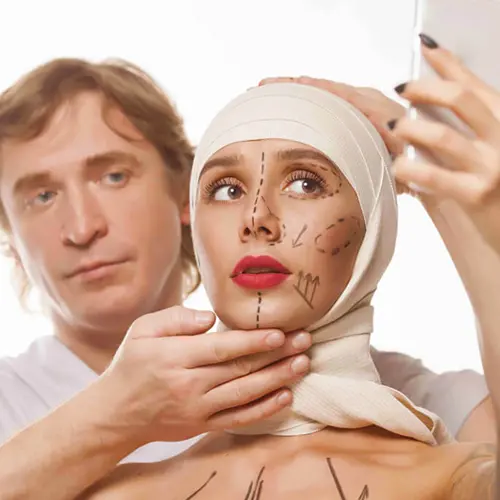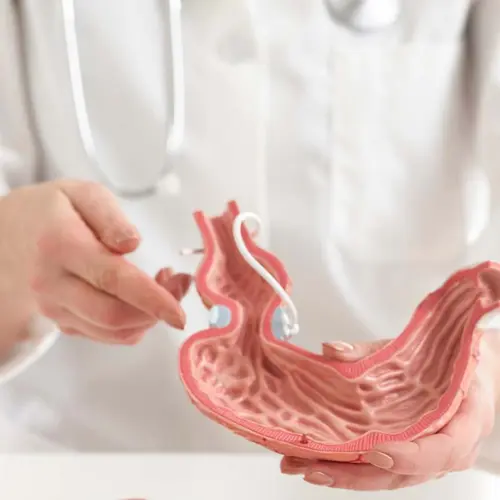Table of Contents
What are the most common types of orthopedic surgeries? Orthopedy is a crucial medical research field that focuses on diagnosis, treatment methods, and rehabilitation for musculoskeletal disorders and problems through orthopedic surgeries. They aim to relieve & restore, correct & improve a patient’s physical condition through surgeries that solve problems with bones, joints, and muscles which are the parts of the musculoskeletal system.
Orthopedic surgeries courses are shaped according to the disease or injuries which generally are trauma injuries, genetic disorders, and various deformities. Their area is vast; from spinal surgeries to ligament repair surgery along with additional rehabilitation and monitoring for the patient.
1. Total Joint Replacement Surgeries
Total joint replacement (TJR) surgeries that the most common orthopedic surgeries are medical procedures that aim to remove an arthritic or damaged joint, then replace it with an implant. Joint replacement surgeries are focused on relieving patients from pain and improving the situation of the joints.
Total joint replacement surgeries are applied for hip, knee, and shoulder problems that require replacement. Let’s take a look at them separately to learn more about the causes, surgeries, possible results, and after-surgery periods.
- Hip Replacement Surgery: Hip replacement surgery, or total hip replacement surgery is a medical procedure that aims to remove damaged parts of the hip, and replace them with an implant that can be made of metal, ceramic or hard plastic. It is caused mainly by severe hip arthritis and traumatic fractures. After the replacement, long-term rehabilitation is advised for the patients to gain flexibility and mobility again. It is essential to follow your doctor’s instructions for a healthy recovery.
- Knee Replacement Surgery: Knee replacement surgery is a medical procedure that aims to replace injured knee joints or arthritis with an implant that is generally made of ceramic, metal, and hard plastic. The focus point of these surgeries is to relieve the pain and replace the functionality of the knees as it used to be expected. After the replacement, rehabilitation is required to gain mobility for both knees.
- Shoulder Replacement Surgery: The shoulder replacement procedure is a surgery that aims to remove damaged and injured parts of the bones and joints, replacing them with an implant or other artificial instruments. After the surgery, long-term rehabilitation is required to relieve the patient’s movements and flexibility.
2. Spinal Surgeries
When we say spinal surgeries, it refers to various spinal surgeries such as spinal fusion, laminectomy, discectomy, scoliosis, etc. They cause difficulties in mobility, pain & discomfort and neurological problems, etc. Spinal surgeries focus on decreasing pain rate and recovering the mobility of the patient along with improving the life qualities. We will take a look at these common problems, benefits & potential risks, treatment methods, and more separately.
- Spinal Fusion: Spinal fusion is a medical procedure to connect two or more bones in the spine which can appear in any part of it. It aims to prevent movement that causes pain & discomfort by putting bone or bone-like material between spinal bones. Medical instruments such as metal plates, screws, grafts, or rods are used during the surgery. Spinal fusion is recommended for patients that have spinal fractures and degenerative disc disease.
- Laminectomy: Laminectomy, also known as decompression surgery is a medical procedure that aims to remove some parts of the vertebral bone to create space which reduces the pressure on the spinal nerves and spinal cord; as the term decompression suggests. Generally, the cause of the necessity for laminectomy is spinal stenosis and herniated discs.
Infection and nerve damage are one of the most common risks of this surgery. However, improving technology helps patients to get minimally invasive treatment.
- Discectomy: Discectomy is a procedure that removes the whole or parts of the damaged discs that cause pressure. One of the most common diseases that require discectomy is herniated discs which cause high pressure on the spinal nerves. As in the laminectomy, improved technology offers to have less invasive treatment.
3. Fracture Repairs
Fracture repairs or fracture repair surgeries are commonly divided into compound & comminuted and greenstick fractures. Let’s learn about them in separate titles, and then add information about the method named Open Reduction and Internal Fixation (ORIF). ORIF provides healthy restoration and prevents further complications which could be irreversible.
- Compound Fractures: Compound fractures or open fractures occur when there is an open wound or when the bone pierces the skin. This breaking movement increases the risk of infection, according to the situation of the fracture.
- Comminuted Fractures: Comminuted fractures are multiple breaks like bone with more than three fractures or places. Apart from compound and greenstick fractures, comminuted fractures are considered challenging for fracture cases.
- Greenstick Fractures: These fractures are generally common among children, and considered incomplete when compared to the other types. They require treatment immediately to prevent further damage.
We talked about the fractures and now will discuss the importance of proper alignment and stabilization. It seems little, but proper alignment and stabilization are important for proper healing & recovery especially for multiple or partial fractures by helping the positioning correctly so that the healing could result in good ways.
On the other side, ORIF provides systematic and proper alignment for reaching the best results for fracture repair surgeries.
4. Arthroscopic Procedures
Arthroscopy is a medical procedure used for treating joint problems. To sum up, arthroscopic procedures generally consist of minimally invasive techniques that are used to treat knee, shoulder, and ankle joints. The procedure starts with the insertion of the medical instrument through the small incision, to see what’s inside of the joints. The treatment approach is shaped according to this. Now, we will take a look at knee & shoulder, and ankle joints for arthroscopic surgeries.
- Knee Arthroscopy: This technique is used to diagnose, research, and treat knee problems or diseases like meniscal tears, trauma damages, or injuries. Arthroscopy allows surgeons to see the inside of the knee parts in more detail.
- Shoulder Arthroscopy: This method is used to diagnose shoulder issues such as shoulder capsules, rotator cuff, etc. With the help of arthroscopy, the muscles, and joints are seen clearly through the fiber-optic camera.
- Ankle Arthroscopy: When compared to knee & shoulder arthroscopy, ankle procedures are less common. However, to diagnose injuries and tears, it is considered an effective method.
In general, all these methods offer various advantages. Being minimally invasive decreases the infection risk when compared to the traditional open surgery methods, and also shortens the recovery time.
5. Ligament and Tendon Repairs
When we talk about the musculoskeletal system, it means that ligaments and tendons are essential parts of them. Therefore, any injury on them causes pain and reduction in mobility easily. And to restore their functionality, it is necessary to get surgical repair. In this title, we will take a look at common procedures including ACL reconstruction, rotator cuff repair, and Achilles tendon repair.
- ACL Reconstruction: Anterior Cruciate Ligament or ACL tears are common in sports such as football and basketball, caused by sudden twisting movements. The procedure means the replacement of the torn ACL with a graft that is taken from certain places such as the hamstring tendon, as the name itself suggests. After the surgery, getting rehabilitation is vital for healthy recovery and returning the old functionality of the movements of the patient.
- Rotator Cuff Injury: This type of injury is generally caused by traumatic damage or overuse. The treatment method for this is mostly open surgery, depending on the scale and situation along with the location of the tear. After the surgery, rehabilitation is needed to restore function and increase the life quality of the patient.
- Achilles Tendon Repair: Achilles tendon repair is popular among athletes. The treatment depends on the situation of the injury. However, the method mostly includes re-attaching the ends of the tendons. After the surgery, rehabilitation is required to restore the function and strength of the patient.
6. Hand and Wrist Surgeries
Our hands are one of the most vital organs that part of our body, and any harm on them may require treatment, including surgery from time to time. In this title, we will discuss hand and wrist surgeries for carpal tunnel syndrome, trigger finger, and Dupuytren’s contracture.
- Carpal Tunnel Syndrome: This syndrome is mostly caused by the heavy impact or pressure on the nerves that are connected to the wrist called the carpal tunnel. Sudden weakness and numbness in the hands are the visible signs of it. There are two types of carpal tunnel surgeries to demolish the pressure on the nerves, your surgeon will decide which one is best for you according to your situation. Recovery and healing include restoring the functionality of the hand.
- Trigger Finger: The trigger finger is a medical condition that causes numbness when you lock or bend your fingers, along with pain and stiffness. It's mostly caused by inflammation. The surgery aims to relieve and release the tendons. In severe cases, physical therapy may be advised. However, recovery & healing is faster when compared to other medical conditions.
- Dupuytren’s Contracture: It’s a medical condition that causes hardness and stiffness, not allowing to patients open their knuckle joints - fingers. The exact reasons for this disease are unknown, however, if you have this disease in your family history; it’d be good to have a medical check. There are different treatment options for Dupuytren’s Contracture such as fasciectomy, but your surgeon would choose the best option according to your condition. The recovery and healing depend on the procedure that would be chosen.
7. Foot and Ankle Surgeries
When we mentioned foot and ankle surgeries, they are one of the most common surgeries since the foot and ankle are organs that control our movements. In this title, we will talk about the disorders such as bunions, plantar fasciitis, and ankle instability. Let’s learn more about them in the next paragraphs.
- Bunions: Bunion is a medical condition that occurs at the edge and base of the big toe, causing the enlargement and angle to the other toes. To remove this bump, a bunionectomy is required. The surgery process is shaped according to the size and condition of the bump. After the surgery, limiting your movements is needed to have a healthy recovery.
- Plantar Fasciitis: Plantar fasciitis is a condition caused by inflammation in the plantar fascia - a tissue locates in the bottom of the foot. It makes the patient walk in pain. The surgery aims to cut the plantar fascia’s parts to relieve the patient and shaped it according to the condition of the patient. Recovery and healing are short when compared to the other conditions, walking with help happens 2-3 weeks after the surgery.
- Ankle Instability: This type of disease is caused by repetitive sprains or injuries on the ankle, mostly seen among athletes. The surgery aims to re-construct ligaments on the ankle so that the instability can be cured and relieve the pain. The surgery is shaped according to the rate of damage and injury, and the recovery time changes from patient to patient. In some cases, physical therapy is recommended.
For foot and ankle injuries, it is essential to consult your doctor to improve your mobility after the surgeries and minimally invasive procedures.
8. Pediatric Orthopedic Surgeries
In this title, we will talk about pediatric orthopedic surgeries that are aimed to treat musculoskeletal problems in children. Since children's and adults’ anatomies are different, surgeries and rehabilitation also differ. It is important to keep it in mind while reading this title. Let’s start with the common disorders and continue with the information in general.
- Clubfoot Correction Surgery: This is a congenital condition that causes abnormalities in the foot of the children such as twisted shapes. Generally, the first treatment options are non-surgical methods such as bracing. It aims to reposition the foot to make them return to normal. However, in further examinations, surgery may be required. The surgery aims to reposition the bones and ligaments. After the surgery, monitoring and physical therapy are recommended.
- Scoliosis: Scoliosis is a disorder that causes abnormal curvation of the spine, seen in children and adolescents people. The surgery aims to solve the problems related to the curvation that causes pain for the patient and stabilize the shape. The most common surgery method is spinal fusion which connects two or more bones in the spine and straightens it by using medical instruments such as rods and screws. Physical therapy is vital after the surgery for healthy recovery.
- Limb Lengthening Procedures: Limb length disorders that are caused by congenital factors, make one limb shorter than the other one or ones. Therefore, these procedures such as external fixation and callotasis aim to length the shorter limb day by day -progressively. Some adjustments are required in bones, according to the patient’s condition. These lengthening procedures are long months that are decided by progress. Physical therapy is also vital.
In pediatric orthopedic surgeries, it is crucial to have specialized care to reach the best results and healthy recovery.
In eight titles, we discussed the orthopedic surgeries that are required to treat musculoskeletal conditions. If they are not treated and not taken carefully after the surgery, worsening conditions are mostly seen. Therefore, it is essential to consult a surgeon so that the problems can be solved. Thanks to the advanced technology in the medical field, there are many more new treatment methods to reach the best results and improve the quality of life of the patient. To find out which surgery option is the best for you, it is essential to share your goals, questions, and problems with your surgeon openly.




















